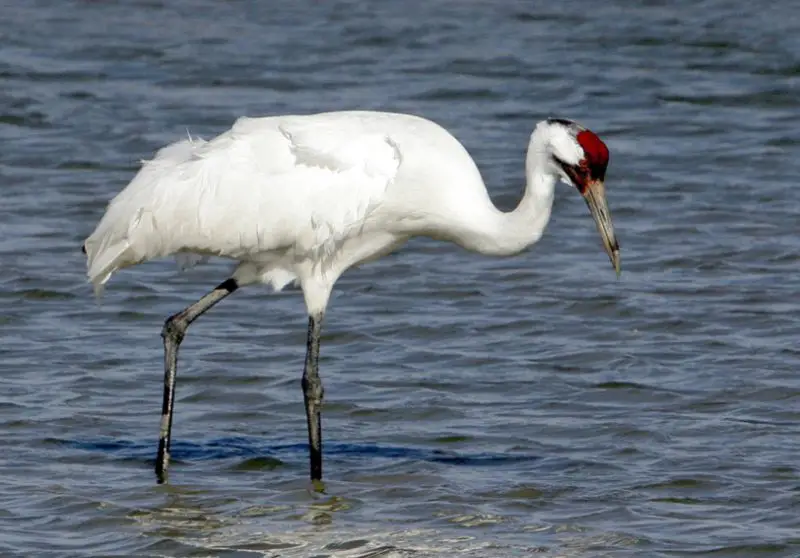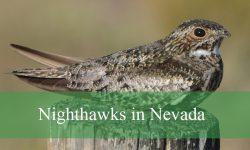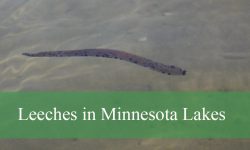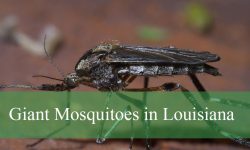Whooping cranes are among the most extraordinary birds in North America. Standing nearly five feet tall with elegant white plumage and a trumpet like call, they capture the attention of anyone lucky enough to see them. Yet despite their striking appearance, much of their life remains hidden within the wetlands of Texas.
Every winter these rare birds migrate thousands of miles from Canada to Texas. They gather in remote marshes, tidal flats, and brackish wetlands where they feed quietly among tall grasses. The Texas coast is the only place in the world where the last wild migratory population survives.
This article reveals the surprising secrets behind their behavior, their relationship with Texas wetlands, and the challenges that continue to shape their future. Their story is one of survival, restoration, and the delicate balance of nature.
Understanding Whooping Cranes

What Whooping Cranes Are
Whooping cranes are large North American wading birds belonging to the species Grus americana. Their name comes from the loud whooping call they produce which can travel miles across wetlands.
Adults have snowy white feathers accented by a red crown and black wing tips visible during flight. Their long legs and neck allow them to wade through deep marshes. Their wingspan can exceed seven feet making them one of the most visually impressive birds in the United States.
Although they appear calm and graceful, their story is shaped by decades of near extinction and intense conservation efforts.
Their Historic Decline
By the 1940s whooping crane numbers dropped to fewer than two dozen individuals. Hunting, habitat destruction, and land conversion decimated their populations. Many experts feared the species would vanish forever.
The Texas wintering population became the last stronghold for the species. Every remaining wild crane depended on the same coastal habitat. Because of this, the Texas wetlands represent a biological sanctuary unmatched anywhere else.
Why Texas Matters
Texas wetlands provide food, shelter, and protection from harsh winter conditions. Blue crabs, wolfberries, marsh crustaceans, and small marine organisms sustain the cranes during their months long stay.
No other region replicates the unique mix of freshwater inflow, salt marsh vegetation, and shallow tidal flats found along the Texas coast. Without these wetlands, the whooping crane population would face enormous challenges.
The Texas Wetlands They Call Home
Aransas National Wildlife Refuge
The primary wintering home for whooping cranes is the Aransas National Wildlife Refuge. Located along the central Texas coast, this refuge consists of tidal marshes, estuarine flats, oak mottes, and coastal prairies.
These habitats provide abundant food and natural cover. The cranes disperse throughout the refuge in small family groups. The quiet, secluded environment reduces disturbance during their winter season.
Coastal Marsh Ecosystems
Texas marshes are composed of cordgrass, saltgrass, sedges, and mangrove edges. The water is a mix of salt and freshwater and the tides create constant shifts in nutrient levels.
These dynamic conditions support large populations of crabs and marine invertebrates. Whooping cranes depend heavily on these species for energy during winter.
Climate and Seasonal Patterns
Texas winters are mild and relatively stable compared to the harsh winters further north. The cranes arrive around October and remain until mid April. During this time they undergo critical phases of feeding and recovery.
Their ability to rebuild energy reserves during winter determines their success during migration and breeding.
Secret Behaviors Found Only in Texas Whooping Cranes
Territorial Wintering Groups
Whooping cranes maintain strict winter territories. A breeding pair and their chick occupy a single territory which they defend from other cranes. Each territory includes feeding flats, upland roosting spots, and shallow marsh for foraging.
Territorial disputes are not violent but involve dancing, posturing, and trumpeting calls to signal dominance.
Unique Feeding Patterns
Whooping cranes feed primarily at low tide. As the water retreats, blue crabs become more accessible. The cranes walk slowly across mudflats and shallow pools scanning for movement.
Their long bills allow them to probe deep into mud where prey hides. During periods when crab numbers decline they shift to wolfberries which grow abundantly in the refuge.
Family Group Dynamics
Crane families remain bonded throughout the winter. Juveniles stay close to their parents while learning feeding strategies and navigation routes. These months represent a vital training period for young cranes preparing for their first migration north.
Migration Mysteries
A Journey of Thousands of Miles
Whooping cranes migrate from Wood Buffalo National Park in Canada to the Texas coast. This migration spans multiple states and requires precise timing. Cranes travel during daylight using thermal air currents to conserve energy.
They often fly at great heights and cover hundreds of miles in a single day. The route has been maintained for generations through instinctive navigation and learned behaviors.
How Juveniles Learn the Route
Young cranes spend their first migration closely following their parents. They memorize landmarks, river corridors, and wetland stopping points. If juveniles are separated too early their survival becomes uncertain.
Texas wetlands serve as both destination and learning ground for future generations.
Challenges During Migration
Weather events, storms, habitat loss along flyways, and collisions with power lines are major threats. Conservation programs map safe migration corridors to reduce these risks.
Diet Secrets of Whooping Cranes in Texas
Dependence on Blue Crabs
Blue crabs are a primary winter food. Their protein content provides essential energy for maintaining body weight. When blue crab numbers fluctuate due to salinity changes or low freshwater inflow, cranes must adjust their diet.
This makes water management in Texas river systems directly relevant to crane survival.
Seasonal Alternatives
When crab availability declines cranes shift to wolfberries from the Lycium shrub. These berries grow in abundance during late fall and early winter. The cranes also consume insects, fiddler crabs, small fish, snails, and aquatic plants.
The variety of food helps them adapt to environmental changes.
Sensitive Feeding Conditions
Even small shifts in salinity, drought, or coastal development can alter food availability. This delicate balance explains why whooping cranes depend heavily on Texas wetlands remaining intact.
Reproduction and Family Secrets
Monogamous Pair Bonds
Whooping cranes typically mate for life. Their bonds strengthen through synchronized dancing, unison calls, and coordinated flight. These displays are most famous during early spring before they depart for breeding grounds.
Their dances include leaps, wing spreads, and rhythmic movements that strengthen pair bonding.
Nesting Far North
Although cranes winter in Texas, they nest only in Canada. The northern wetlands provide quiet nesting grounds with minimal predation. The cranes build floating nests from marsh vegetation.
Texas plays no direct role in nesting but provides the energy they need to complete the journey and successfully raise offspring.
Juvenile Training
The winter months are essential for teaching young cranes feeding strategies, danger avoidance, and social communication. Parents guide juveniles through every aspect of survival.
Conservation Efforts and Hidden Success Stories
The Turnaround from Near Extinction
From fewer than two dozen individuals in the 1940s, the wild migratory population has grown to several hundred today. This recovery is one of the greatest conservation accomplishments in North America.
Texas wetlands represent the backbone of this success.
Habitat Protection
Strict conservation regulations protect cranes from disturbance. The Aransas refuge and surrounding coastal areas maintain controlled access. Land management programs ensure that key habitats remain stable.
Monitoring and Research
Biologists track crane movements through telemetry and aerial surveys. These studies reveal migration timing, territory boundaries, and changes in population health.
Data helps conservationists make decisions about water management and habitat restoration.
Hidden Threats to Whooping Cranes in Texas
Water Availability
Freshwater inflow influences blue crab populations. When drought or upstream water use reduces inflow, marsh salinity rises. This impacts crab reproduction and directly affects crane nutrition.
Water rights and river management have become critical conservation topics.
Habitat Loss
Coastal development, industrial expansion, and rising sea levels threaten wetlands. The cranes depend on large undisturbed areas. Fragmentation increases risk to territories.
Climate Change
Stronger storms, heat waves, and altered rainfall patterns pose long term challenges. Changes in crab populations or marsh structure may affect crane success.
Little Known Daily Habits
Roosting Behavior
Cranes roost in shallow waters where predators cannot reach easily. They stand throughout the night resting lightly but staying alert.
Social Vocalizations
Their whooping call carries across wetlands. Pairs communicate continuously with soft clucks, longer calls, and rhythmic duets.
Preening and Feather Care
Feather maintenance is essential for long migrations. Cranes spend long periods preening to keep their plumage in optimal condition.
Human Interaction and Observation
Birdwatching in Texas
Winter is peak whooping crane viewing season. Visitors travel from around the country to see them. Boat tours and observation platforms offer opportunities without disturbing the birds.
Importance of Distance
Cranes are sensitive to disturbance. Maintaining proper distance ensures they can feed and rest without stress which contributes to their winter survival.
Community Conservation Programs
Texas communities participate in crane conservation through habitat restoration, water management advocacy, and public education. Local engagement is essential for long term success.
FAQs About Whooping Cranes in Texas Wetlands
Why do whooping cranes come to Texas
They migrate to Texas for mild winters and access to rich coastal wetlands that provide critical food sources.
What do whooping cranes eat in Texas
Their primary food is blue crabs but they also eat wolfberries, insects, fish, and marsh invertebrates.
Where can I see whooping cranes
The Aransas National Wildlife Refuge is the best known wintering habitat.
Are whooping cranes endangered
They remain endangered but their numbers have increased significantly due to conservation.
How tall are whooping cranes
Adults can reach nearly five feet in height with a wingspan over seven feet.
Why are blue crabs important
Blue crabs provide the protein cranes need to recover from migration and prepare for breeding.
Do they nest in Texas
No. They nest in Canada but depend on Texas wetlands for winter survival.
Are whooping cranes dangerous
They are not dangerous to humans but should be observed from a respectful distance.
How many whooping cranes exist
The wild migratory population includes several hundred individuals and grows slowly each year.
Can climate change affect them
Yes. Rising sea levels, storms, and changes in food availability may impact their winter habitats.
Conclusion
Whooping cranes are remarkable survivors whose lives are intertwined with the wetlands of Texas. Their wintering grounds support their energy needs, protect their family groups, and provide stability during the most vulnerable season of the year.
Their story reveals how a species pushed to the brink of extinction found hope through dedicated conservation efforts and the persistence of its remaining wild population. The Texas wetlands continue to be the heart of their recovery and the center of their survival.
Understanding these birds helps us appreciate the delicate natural systems that sustain them. The more we learn about whooping cranes, the more we recognize the importance of protecting the wetlands they call home.






